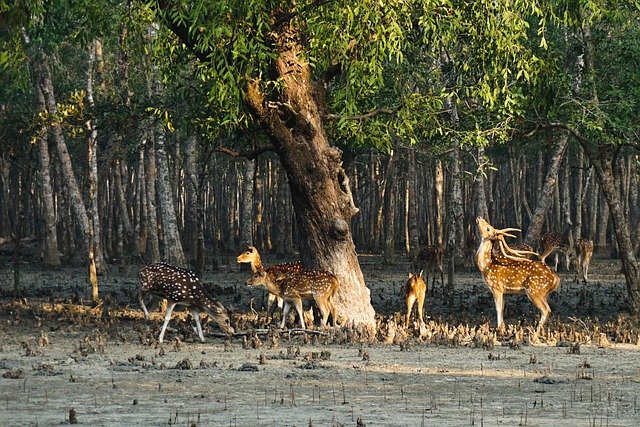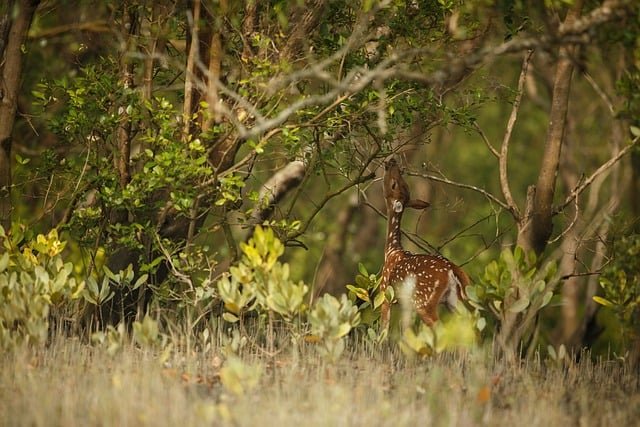Sundarban
The Sundarbans, the largest mangrove forest in the world, is a stunning and unique natural wonder located in the delta region of the Padma, Meghna, and Brahmaputra river basins, straddling the border between India and Bangladesh. Its beauty and ecological significance make it one of the most treasured landscapes on the planet.
Natural Beauty of Sundarban
Lush Mangrove Forests
The Sundarbans is renowned for its dense, verdant mangrove forests, which cover a vast area of approximately 10,000 square kilometers. The forest is characterized by a complex network of tidal waterways, mudflats, and small islands, creating a dynamic and mesmerizing landscape. The interplay of light and shadow through the dense canopy creates an enchanting atmosphere.Waterways and Estuaries
The waterways of the Sundarbans, with their serpentine curves and tranquil waters, add to its allure. The rivers and estuaries, influenced by tidal actions, create a constantly changing environment that is both captivating and serene. These waterways are vital for the ecosystem, supporting a diverse range of aquatic life and providing a unique setting for boat rides and exploration.How to go Sundarban
From Dhaka to Khulna/Mongla:
By Bus:
- Route: Dhaka to Khulna
- Duration: Approximately 8-10 hours
- Cost: BDT 500-1,500 ($6-18) depending on the bus service (non-AC or AC).
By Train:
- Route: Dhaka to Khulna
- Train Services: Sundarban Express or Chitra Express
- Duration: Approximately 10-12 hours
- Cost: BDT 500-1,500 ($6-18) depending on the class of service.
By Air:
- Route: Dhaka to Jessore
- Duration: Approximately 30-40 minutes
- Cost: BDT 3,000-5,000 ($35-60) for a one-way ticket.
- From Jessore, take a bus or car to Khulna (about 2-3 hours, costing around BDT 200-500 or $2.50-6).
By Private Car:
- Duration: Approximately 6-8 hours
- Cost: Varies significantly, but expect around BDT 5,000-10,000 ($60-120) for rental and fuel.
From Khulna/Mongla to the Sundarbans:
- By Boat:
- Most Sundarbans tours start from Khulna or Mongla.
- Duration and Cost: Tour packages are commonly used, which include the boat trip, food, and guide services.

Costs for a Day Trip in the Sundarbans
A typical day trip to the Sundarbans involves hiring a tour operator as it includes the necessary permits, guide services, and transport. Here’s a breakdown of the estimated costs:
Tour Packages:
- Cost: BDT 5,000-10,000 ($60-120) per person per day. This usually includes:
- Boat rental
- Guide and crew
- Entry fees to the Sundarbans
- Meals (breakfast, lunch, and snacks)
- Basic accommodation on the boat if needed
- Cost: BDT 5,000-10,000 ($60-120) per person per day. This usually includes:
Additional Costs:
- Personal Expenses: Souvenirs, additional snacks or drinks, etc. (BDT 500-1,000 or $6-12)
- Tips for Guides and Crew: Optional but appreciated (BDT 200-500 or $2.50-6)

Sample Itinerary for a Day Trip
- Early Morning:
- Depart from Khulna/Mongla by boat.
- Morning:
- Explore the Sundarbans, visit watchtowers, and embark on a forest walk.
- Midday:
- Lunch on the boat, usually traditional Bangladeshi cuisine.
- Afternoon:
- Continue exploring, with possible wildlife sightings including birds, crocodiles, and if fortunate, the Bengal tiger.
- Evening:
- Return to Khulna/Mongla.

Tips for Visiting the Sundarbans
Book in Advance:
- Tour packages fill up quickly, especially during peak seasons (November to February).
Check Inclusions:
- Ensure your package includes all necessary permits and safety equipment.
Health Precautions:
- Carry mosquito repellent, sunscreen, and any personal medications.
Respect the Environment:
- Follow the guidelines provided by your guide to protect the fragile ecosystem of the Sundarbans.
By planning ahead and choosing a reliable tour operator, a trip to the Sundarbans can be an unforgettable experience, offering a glimpse into one of the most unique and biodiverse regions on the planet.

